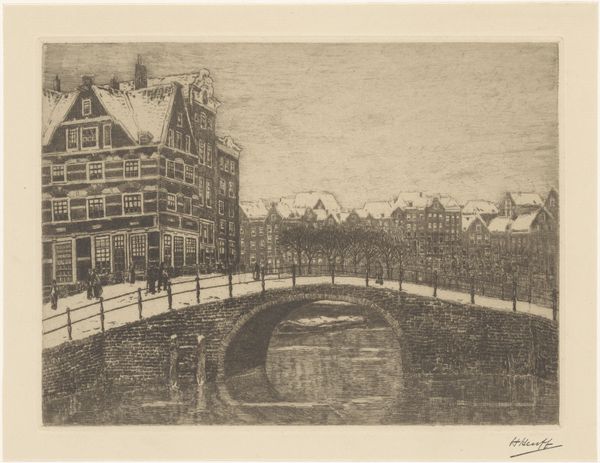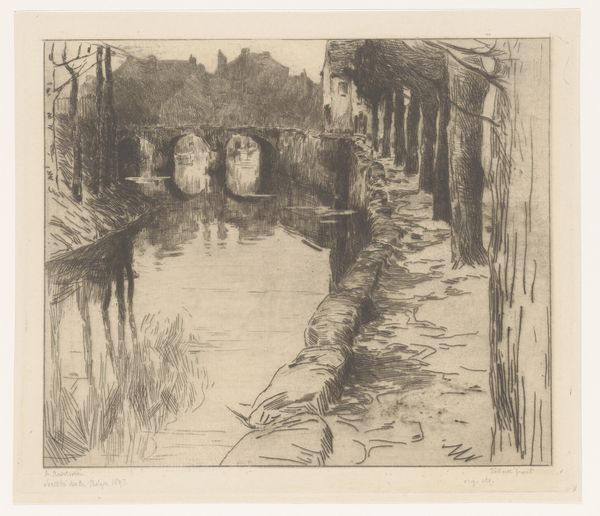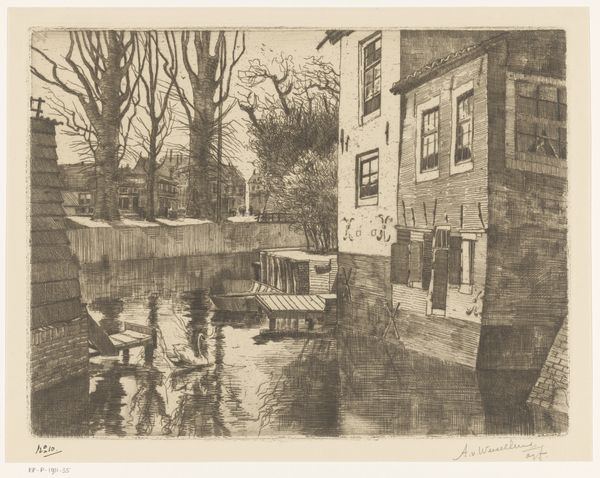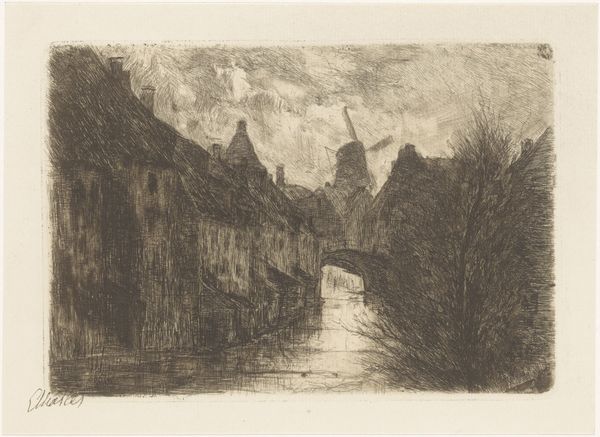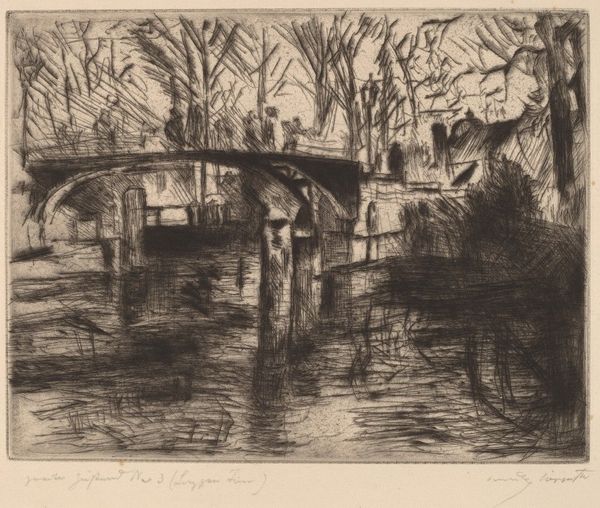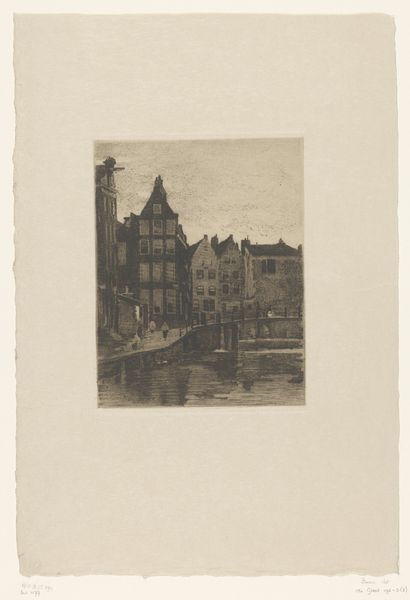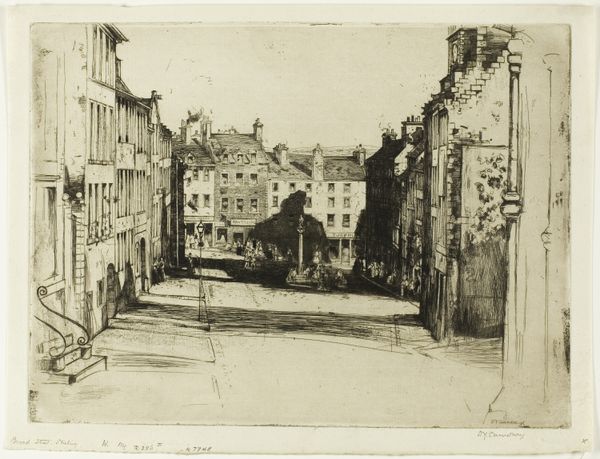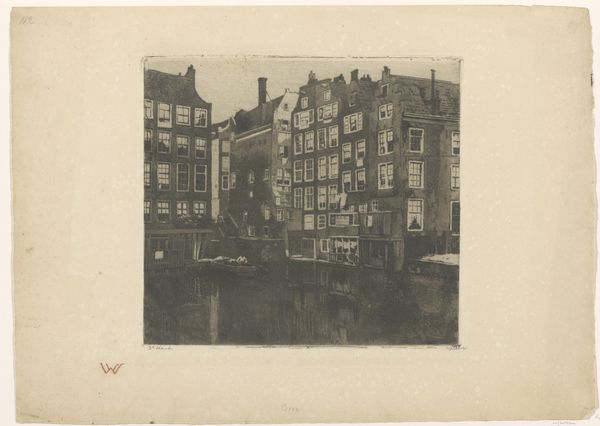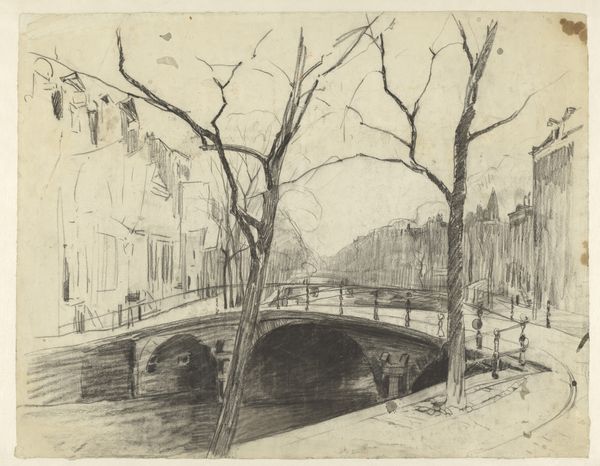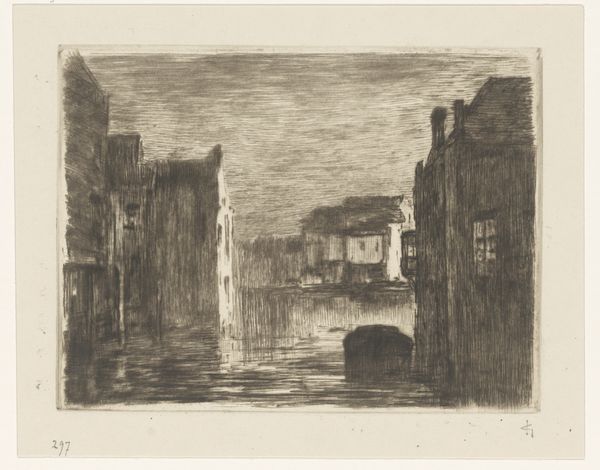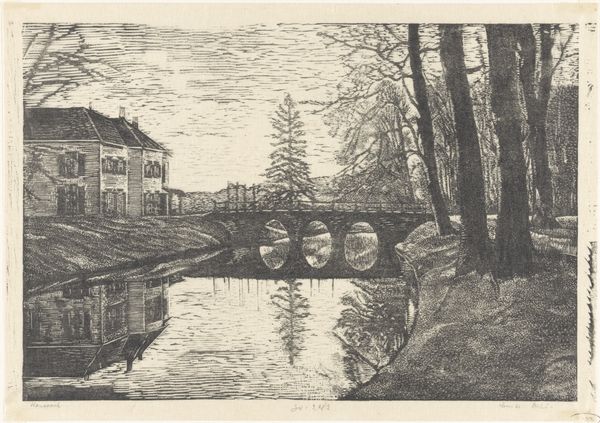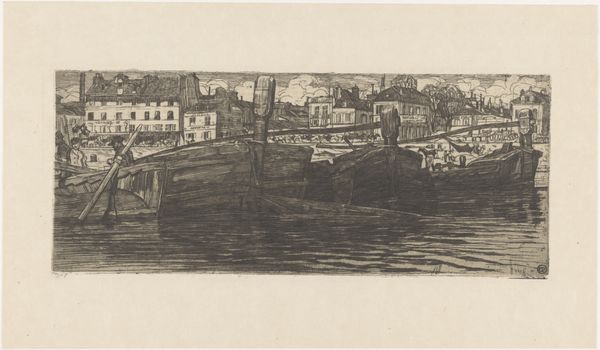
print, etching
#
dutch-golden-age
# print
#
etching
#
landscape
#
line
#
cityscape
#
realism
Dimensions: height 184 mm, width 253 mm
Copyright: Rijks Museum: Open Domain
Editor: This etching, "Smidswater in Den Haag" by Willem Adrianus Grondhout, presumably created sometime between 1888 and 1931, gives off such a quiet, almost melancholic mood. It captures a simple, everyday scene with delicate lines. What do you see in this piece, from your perspective? Curator: For me, this cityscape invites a consideration of the evolving relationship between the individual and the urban environment, particularly focusing on class and labour. The solitary figure on the bridge, contrasted against the backdrop of seemingly bourgeois houses, embodies the worker traversing spaces possibly not intended for them. Consider the Dutch Golden Age and its legacy – a time of immense wealth accumulation built upon global trade networks and, inescapably, colonialism and labour exploitation. Editor: So, you're saying the seemingly peaceful scene may reflect hidden tensions? Curator: Precisely. Grondhout's choice to use the etching medium, traditionally associated with reproducing older master paintings, could also be a commentary on art’s role in upholding or challenging the status quo. Who has the leisure to stroll and contemplate versus who is crossing that bridge out of necessity, perhaps after working? Where is the artist situated in relation to these actors, both visually and economically? Do you think that this print aestheticizes poverty by focusing on beauty rather than harsh economic realities? Editor: I see what you mean. Thinking about it that way gives the artwork another, perhaps uncomfortable, meaning. Curator: Exactly. Reflecting on the narratives inherent in these depictions prompts questions about spectatorship and our engagement with the complex stories embedded within seemingly simple landscapes. Editor: I'll definitely remember to consider that next time I view a landscape, especially one depicting everyday scenes. Curator: Remember art doesn't exist in a vacuum; it's shaped by and reflects its context.
Comments
No comments
Be the first to comment and join the conversation on the ultimate creative platform.
